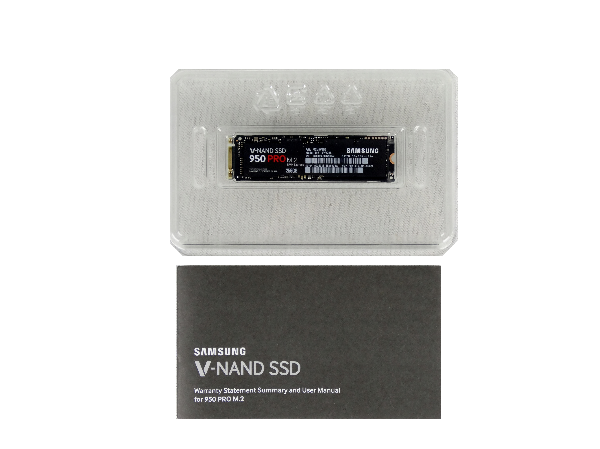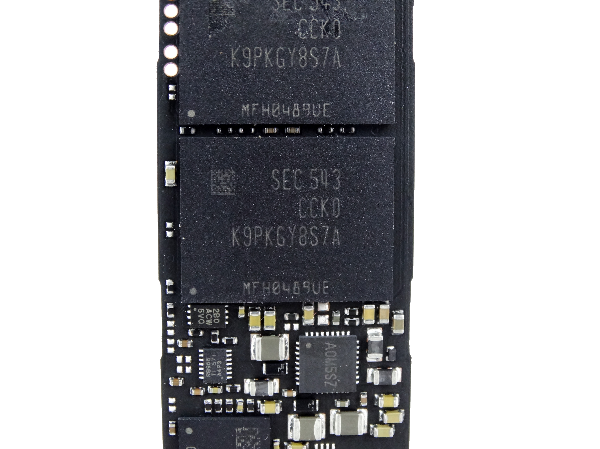Early Verdict
The NVMe protocol certainly delivered all it promised. The technology has reduced flash latency to the host system, and that has freed up access times as well as throughput ceilings. The 950 Pro has leveraged the technology so well that running two drives together just slows down the storage system.
Pros
- +
Doubling capacity and increasing data integrity are still good use cases for RAID in the home.
Cons
- -
Increasing performance through RAID 0 no longer has the same shine it once had. NVMe SSDs are fast enough to satisfy the most demanding user needs. We've hit a point where RAID 0 run off of a chipset gives diminishing returns.
Why you can trust Tom's Hardware
Specifications, Pricing, Warranty And Accessories
When it comes to flash capacity, more is better. The question is whether two are better than one. Today, we look at the Samsung 950 Pro 256GB SSD again, but with a focus on pairing two drives in a RAID 0 array. This option costs a little more than a single Samsung 950 Pro 512GB, but does the array offer a performance advantage that makes up the price difference?
Non-volatile Memory Express (NVMe) is a new storage protocol designed to reduce latency in the software stack for flash and next-generation solid-state media. There are only two viable client-flash processors available in the M.2 form-factor: the Samsung UBX and the Toshiba TC58NCP0706SB (found in the Toshiba XG3 and the upcoming OCZ Storage Solution's RevoDrive 400).
The Samsung UBX flash processor has been on the market for nearly a year now. It first appeared in the SM951-AHCI and later came to market with NVMe in the SM951-NVMe and PM953, both OEM products sold to system builders. Samsung eventually brought the UBX controller to the retail market in the 950 Pro, and it is one of the best-performing SSDs available today.
Samsung released the 950 Pro in only two capacity sizes—256GB and 512GB. The company claimed a 1TB model would follow the initial release in early 2016 but that drive has yet to appear. In our first review of the 950 Pro, we tested three configurations with a single 256GB, a single 512GB and two 512GB drives in a RAID 0 array. We didn't have access to a second 950 Pro 256GB drive to obtain RAID numbers during the test, but that changed last week when Samsung shipped us a full retail 256GB drive to round out our coverage.
Specifications
MORE: Best SSDs For The Money
MORE: Latest Storage News
MORE: Storage in the Forums
The 950 Pro 256GB compares well to the larger 512GB model, but there are some key differences in performance and endurance. That starts with the 300 MB/s sequential read difference that favors the larger drive. The 950 Pro 256GB takes an even larger cut with sequential write speed, a 600 MB/s loss. The 256GB model also has half the endurance, but that's to be expected given the low number of NAND die Samsung needs to reach these capacities.
Random performance is also slightly different. The same can be said about the power consumption.
Get Tom's Hardware's best news and in-depth reviews, straight to your inbox.
The 950 Pro uses Samsung's UBX PCIe 3.0 x4 to flash controller. The UBX was configured to support the NVMe protocol, which reduces latency and allows random performance to increase due to greater parallelism. The NVMe-enabled controller is paired with Samsung's 32-layer V-NAND and a single 512MB DRAM buffer used to cache map data.
Pricing, Warranty And Accessories
The 950 Pro 256GB currently sells for as low as $190, while the 512 GB sells for $330. Two 950 Pro 256GB drives cost about $50 more than the single, larger-capacity drive. Today we'll see if the performance of two drives makes up the difference.
The 950 Pro products ship as bare drives but Samsung allows users to download two useful software packages. The first is Magician, an SSD toolbox that allows users to monitor the status of Samsung SSDs, optimize operating system conditions, and perform some disk-management operations. Samsung also has a custom data-migration tool that allows users to clone data from an existing drive and transfer to your new Samsung drive.
A Closer Look







Not much has changed with the 950 Pro since we first tested them other than the final sticker on the drive itself. For comparison, there is an image of the NDA-release sample and the final retail sample together.
Current page: Specifications, Pricing, Warranty And Accessories
Next Page What Is RAID And Initial Performance Testing
Chris Ramseyer was a senior contributing editor for Tom's Hardware. He tested and reviewed consumer storage.
-
USAFRet Reply17700323 said:Why do you expect gains in video games when everything relevant is loaded in RAM?
A lot of people do.
Assuming that the performance gains we saw with spinning disks in RAID 0 automagically does the same with SSD's. It does not. -
Tibeardius Did it have any sort of thermal throttling occur? These pcie m.2 drives can get pretty hot.Reply -
Integr8d "Once upon a time, you could sling a couple of Western Digital Raptors together, fire up a level in Battlefield 2 before anyone else, get the plane and dominate the map."Reply
Someone just explained 24 months of my life:) -
HT ReplyWhy do you expect gains in video games when everything relevant is loaded in RAM?
that's the point of faster drives, loading it all in ram. do you think it magically appears there by itself ? -
HT good article Chris, i'm intrigued by your statement of the samsung driver vs the M$ one, i would've liked to see some numbers comparing the two.Reply -
Virtual_Singularity Interesting article. Also: am a lil' dumbfounded at how much the price of the 850 pro series has dropped since the holidays, a mere 3+ months ago...Reply


